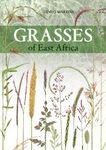Field / Identification Guide Identification Key
By: John W Short(Author), Daniel D Spaulding(Author)
384 pages, colour photos, b/w line drawings
![Ferns of Alabama Ferns of Alabama]()
Click to have a closer look
About this book
Customer reviews
Biography
Related titles
About this book
A field guide to the more than 120 species of ferns and fern allies occurring naturally in the state, Ferns of Alabama provides yet another window into Alabama's amazing biodiversity.
Ferns of Alabama is a beautiful, full-color guidebook to the great variety of ferns and fern allies that populate Alabama woods, stream banks, prairies, glades, roadsides, and trails. Along with the ecologically similar but genetically unrelated horsetails, clubmosses, and quillworts, ferns are nonflowering vascular plants of ancient lineages that date back to the Devonian era. Although they are now known to be unrelated, all of these groups of plants were once thought to be part of a single division of the plant kingdom called pteridophytes because of their similarities in reproductive biology, and they are generally studied together. These plants occur in great variety and abundance in Alabama because of the temperate climate, the sufficient year-round moisture, and the multitude of available habitats, soils, and microclimates in the state.
The individual species accounts by John W. Short and Daniel D. Spaulding contain a description of the plant and its habitat, range, history, conservation status, and common names. Color photographs by T. Wayne Barger, Alan Cressler, Sarah R. Johnston, L. J. Davenport, and John W. Short show the ferns in their native settings and black and white line drawings by Marion Montgomery, Sue Blackshear, and John W. Short highlight major features and peculiarities of form. Maps illustrate the county-bycounty distribution of the more than 120 species described. Taxonomic keys designed for the nonscientific user make it easy to pinpoint the identity of a subject being studied in the field, and a glossary explains necessary botanical terms. There is also an appendix by Alan Weakley addressing taxonomic change.
Customer Reviews
Biography
John W. Short is senior environmental scientist at Weston Solutions and is the author or coauthor of a number of papers on Alabama ferns.
Daniel D. Spaulding is curator of collections at the Anniston Museum of Natural History and is a coauthor of the Annotated Checklist of the Vascular Plants of Alabama.
Field / Identification Guide Identification Key
By: John W Short(Author), Daniel D Spaulding(Author)
384 pages, colour photos, b/w line drawings
"This is a first rate field guide. An emphasis on plain English is notably successful [...] An award of merit to the publishers is deserved for having the courage to place a maiden fern on the cover. Every fern fancier in Alabama should have this guide. And if you don't live in the Heart of Dixie, get it so you can compare your field guide to a good one."
– Tom Stuart, The Hardy Fern Foundation Quarterly
"This attractive new guide includes more than 120 species of ferns and lycophytes! Sturdily bound with heavy paper covers, the latest contribution to the Gosse Nature Guides series is a collaboration between two of the most knowledgeable botanists on the state's fern flora. The book is nicely laid out, and the design relatively lavish [...] The first comprehensive account of Alabama's pteridoflora in more than 40 years is a very useful and well-researched volume. Those who like to explore and botanize in the state's wild areas will find it to be an indispensable addition to their bookshelves."
– George Yatskievych, Fiddlehead Forum
"Ferns of Alabama is well organized, and the photographs are of good quality and composition. The photos gave me insight into the fern's local environment by showing neighboring plants. It is a delight to see theLycopodiums and other fern allies presented in a convenient way. I see old favorites and new, unfamiliar ones. The ecological and geological notes will be useful tools for the horticulturist."
– Michael M. Gibson, coauthor of Wildflowers of North Alabama
"Ferns of Alabama is a valuable resource for many, including biologists, students, and outdoor enthusiasts. It truly fills a long-term void and thoroughly addresses ferns growing naturally in Alabama."
– Daniel D. Jones, professor emeritus of biology at the University of Alabama at Birmingham
"Short and Spaulding provide an excellent introduction to a small but special portion of the plant kingdom, ferns and their 'allies,' as well as an excellent introduction to botancal exploration and phytogeography in Alabama. The guide contains all the tools needed for field identification of any of the 120 species covered. These include keys to genera and keys to species in nontechnical terminology, descriptions with illustrations (photos and drawings), and distribution maps. The latter tool is more important than many realize, since tying together place/location and plant in the context of habitat requirements helps to eliminate erroneous possibilities. The authors capitalize on the importance of this relationship as they describe habitats throughout the state, mentioning many of the species characteristic of the places being described. Entries are well-organized, featuring morphology in detail, the habitat, the plant's range, comments, and name variations. The comments are thoughtful, able to spark the reader's imagination and spawn further inquiry related to anthropology, economics, history, or science. An extensive list of references supports the work. The additional aids, including a checklist of species, key to families, and glossary, will prove handy for the serious student of ferns. Summing Up: Recommended. All regional botany collections."
- T. Johnson, Prescott Valley Public Library, for CHOICE
















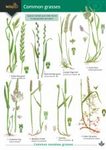


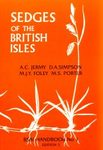
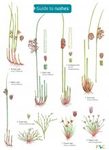
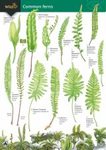

![Start to Identify Grasses [enlarged edition]](http://mediacdn.nhbs.com/jackets/jackets_resizer_medium/24/249274.jpg?height=150&width=112)
